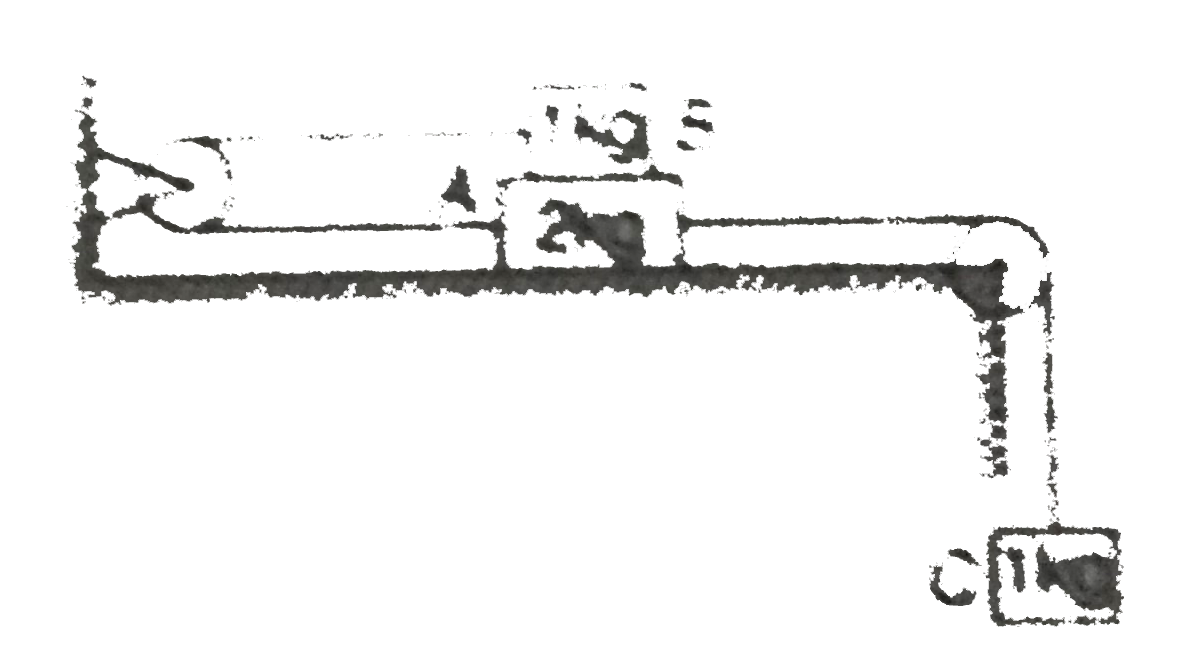Angle of friction between any two surfaces in contact is…… of force of limitting friction F and…..makes with…..
To solve the question regarding the angle of friction between two surfaces in contact, we will break it down step by step.
1. Understanding the Concept of Angle of Friction:
- The angle of friction (θ) is defined as the angle between the direction of the limiting friction force (F) and the normal force (N) acting on an object resting on a surface.
2. Identifying Forces Acting on the Object:
- Consider an object of mass (m) resting on a rough inclined plane. The forces acting on it include:
- The weight of the object (W = mg) acting vertically downward.
- The normal force (N) acting perpendicular to the surface.
- The limiting friction force (F) acting parallel to the surface, opposing the motion.
3. Components of Weight:
- The weight can be resolved into two components:
- Perpendicular to the incline: W_{\perpendicular} = mg \cos(\theta)
- Parallel to the incline: W∥=mgsin(θ)
4. Static Friction Force:
- The static friction force (F) can be expressed as:
F=μN
- Where μ is the coefficient of static friction.
5. Equilibrium Condition:
- For the object to be in equilibrium, the forces acting along the incline must balance:
mgsin(θ)=F
- Substituting the expression for F:
mgsin(θ)=μN
6. Normal Force:
- The normal force can be calculated from the perpendicular component of the weight:
N=mgcos(θ)
7. Substituting Normal Force in Friction Equation:
- Substitute N in the friction equation:
mgsin(θ)=μ(mgcos(θ))
- Dividing both sides by mg (assuming m≠0):
sin(θ)=μcos(θ)
8. Finding the Angle of Friction:
- Dividing both sides by cos(θ):
tan(θ)=μ
- Therefore, the angle of friction can be expressed as:
θ=tan−1(μ)
9. Conclusion:
- The angle of friction between any two surfaces in contact is the angle (θ) which the resultant of the limiting friction force (F) makes with the normal force (N).
Final Answer:
The angle of friction between any two surfaces in contact is the angle which the resultant of the limiting friction force (F) makes with the normal force (N).
- The angle of friction (θ) is defined as the angle between the direction of the limiting friction force (F) and the normal force (N) acting on an object resting on a surface.
- Consider an object of mass (m) resting on a rough inclined plane. The forces acting on it include:
- The weight of the object (W = mg) acting vertically downward.
- The normal force (N) acting perpendicular to the surface.
- The limiting friction force (F) acting parallel to the surface, opposing the motion.
- The weight can be resolved into two components:
- Perpendicular to the incline: W_{\perpendicular} = mg \cos(\theta)
- Parallel to the incline: W∥=mgsin(θ)
- The static friction force (F) can be expressed as:
F=μN
- Where μ is the coefficient of static friction.
- For the object to be in equilibrium, the forces acting along the incline must balance:
mgsin(θ)=F
- Substituting the expression for F:
mgsin(θ)=μN
- The normal force can be calculated from the perpendicular component of the weight:
N=mgcos(θ)
- Substitute N in the friction equation:
mgsin(θ)=μ(mgcos(θ))
- Dividing both sides by mg (assuming m≠0):
sin(θ)=μcos(θ)
- Dividing both sides by cos(θ):
tan(θ)=μ
- Therefore, the angle of friction can be expressed as:
θ=tan−1(μ)
- The angle of friction between any two surfaces in contact is the angle (θ) which the resultant of the limiting friction force (F) makes with the normal force (N).
The angle of friction between any two surfaces in contact is the angle which the resultant of the limiting friction force (F) makes with the normal force (N).
Topper's Solved these Questions
- BOOK - PRADEEPCHAPTER - LAWS OF MOTIONEXERCISE - Problems for practice112videos
LAWS OF MOTION
- BOOK - PRADEEPCHAPTER - LAWS OF MOTIONEXERCISE - JEE (Main and Advanced)/ Medical Entrance Special93videos
LAWS OF MOTION
- BOOK - PRADEEPCHAPTER - LAWS OF MOTIONEXERCISE - Multiple Choice Questions42videos
LAWS OF MOTION
- BOOK - PRADEEPCHAPTER - KINEMATICSEXERCISE - 1 NCERT Comprehension4videos
KINEMATICS
- BOOK - PRADEEPCHAPTER - MATHEMATICAL TOOLSEXERCISE - Fill in the blanks5videos
MATHEMATICAL TOOLS
Similar Questions
Knowledge Check
- Question 1 - Select One
Static friction between two surfaces
Aprevents the relative motion between themBopposite to the direction of motion of themCacts in opposite direction of applied forceDBoth (a) and ( c) - Question 2 - Select One
Friction between any two objects is due to
Aattraction between themBrepulsion betweenn themCsome adhesive forces between themDirregularities on the surfaces - Question 3 - Select One
The angle of friction between two surface in contact is 60∘ What is the cofficient of friction between them .
A√3B1√3C0D1
Coefficient of limiting frictions between any two surfaces in contact is ..............….. force of …….......... and …….............. between them.
View SolutionFriction coefficient between any two surface in contact is 0.5 pulleys and string aare frictioness .Find the friction between blocks A and B ( in newton)
 View Solution
View SolutionWhat is the angle of friction between two surfaces in contact , if coefficient of friction is 1/√3 ?
View SolutionThe force of friction between two bodies is
View SolutionThe frictional force between two surfaces is independent of
View Solution

